| Mesquite is really an oasis with the mandatory green patch for
the golf course and a few palms. This probably consumes a significant
proportion of the water used here. The only other item of note was the
casino. | 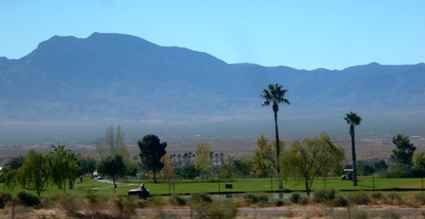 |
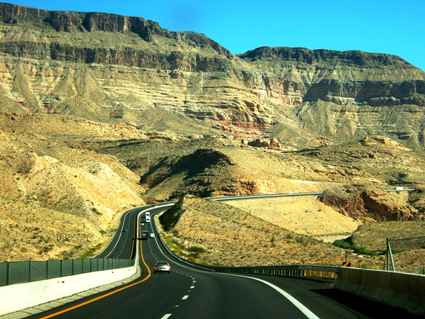 | Interstate 15 leaves
Nevada, crosses Arizona, and then enters Utah. All the time the road is
climbing because Zion National Park ranges from 3600ft to 8700ft. This is a
pretty awesome road, a word which will be very overused in the next few
days. |
| Zion National Park covers a huge area but only small parts are
accessible by road. We started by visiting the Kolob Canyon which is in the
northwest corner. | 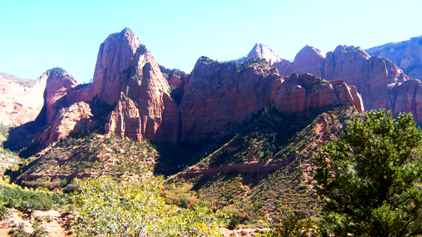 |
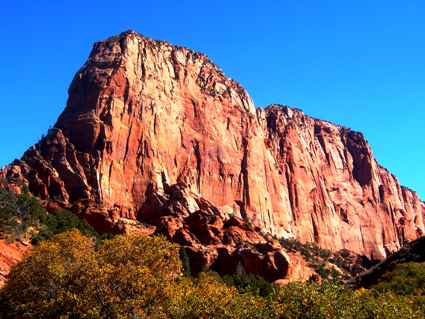 | There is a five mile
road up the canyon giving us our first views of the characteristic red
coloured rocks. |
| The road starts at 5000ft and climbs up another 2000ft to the
viewpoint at the end of the road. This is a less visited part of the park
and being within a week of the season's end, we saw very few people or cars.. | 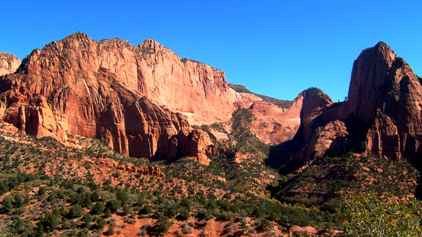 |
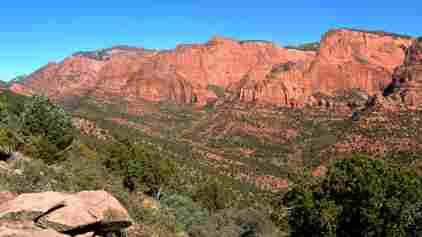 | The view from the end
of the road across the canyon is quite amazing. Most of this range is almost
8000ft high and the red colour is even more striking in the afternoon sun. |
| Also notable in this picture is the red road. Even when the
road has been resurfaced, they come along once it has settled down and apply
a red ash coating which is part of the park's 'image'. | 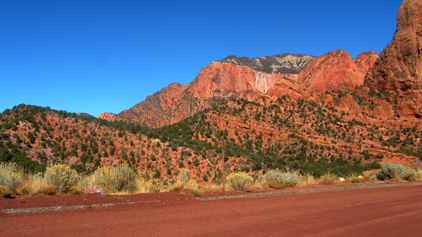 |
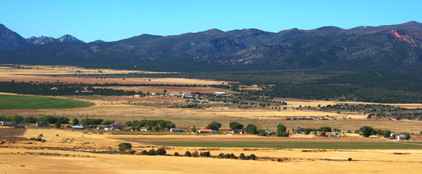 | Coming back down from
the canyon, we can see the view across the valley through which the I15
runs. We must head back south some 25 miles before turning east towards the
park's main centre. |
| We pass through an area called the Hurricane Mesa (after the town
there). The rock formations with horizontal strata date back to the days
when this was part of a sea floor - before the Colorado plateau was raised
up out of the sea by the movement of the tectonic plates. In the foreground
is the beginning of another canyon - not very deep yet, but every rainfall
will cause further erosion. | 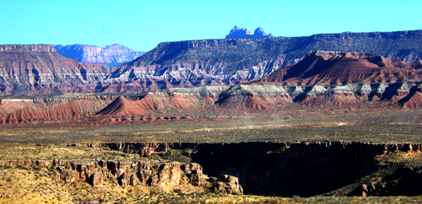 |
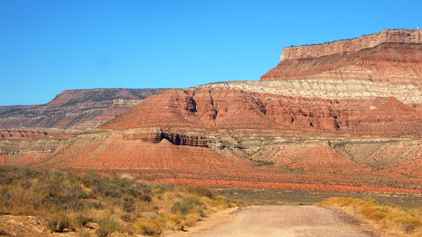 | There is another road
up to one of the wilder plateaus but the road is mostly unpaved and
unsuitable for vehicles our size. It is about 30 miles up to the reservoir
and the many back-country hikes. |
| We carried on into Zion Canyon heading for the town of
Springdale where we would camp overnight. | 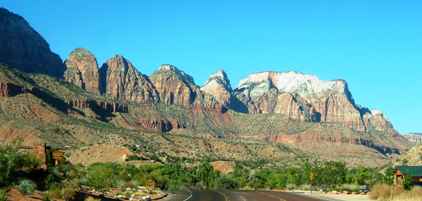 |
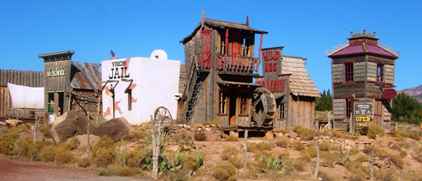 | We did pass through
the ghost town of Grafton along the way. I'm not sure if these were truly
ancient buildings, or a tourist trap. It looked fun but we didn't stop. |
| As the afternoon sun sets on the red rocks, the results can be
quite spectacular. This was the view from the RV at the campsite. | 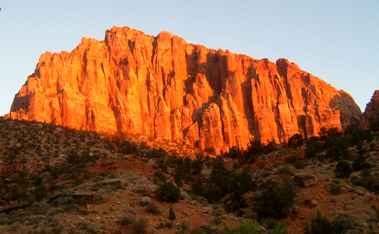 |
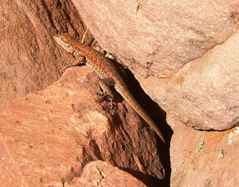 |
During the day we did stop for a number of walks at the viewpoints. The
small lizards are present in abundance but they can be quite elusive because
they move so quickly. They are also quite small, typically only being 2-3
inches long. |
| Even more difficult to spot is the insect life. You normally
think of insects being small but this beastie was almost four inches long,
and it obliged by staying put while we viewed it. | 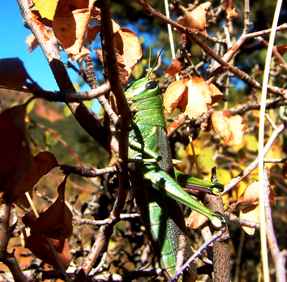 |
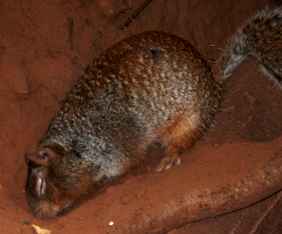 | There are dozens of
varieties of small mammals all of which look very similar to us. This one
had a quick dust bath and then obligingly stood up and looked at us.
Standing, he's
only about six inches tall. | 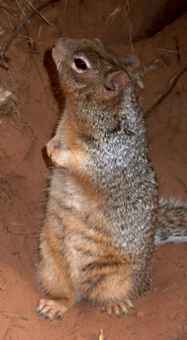 |
| The main drive into the canyon is not open to private cars. They
have shuttle buses which run every 7-8 minutes along the 8 mile drive. They
are ecologically friendly being gas powered, with trailers with four wheel
steering. Note the innovative air conditioning system. | 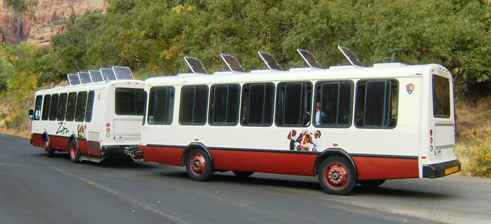 |
|